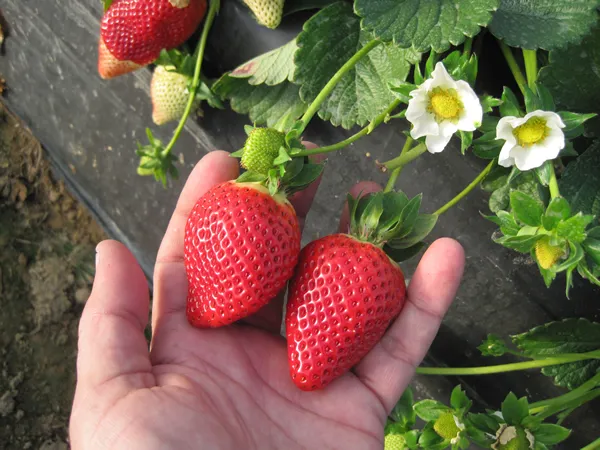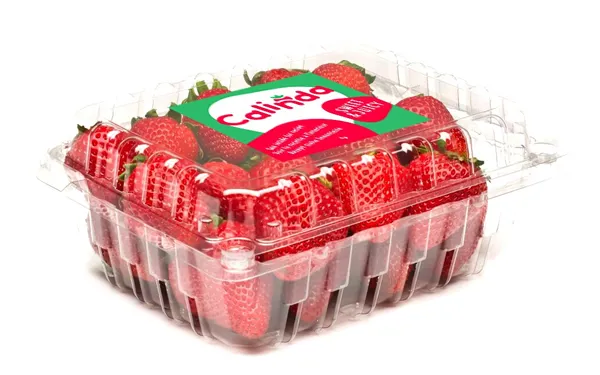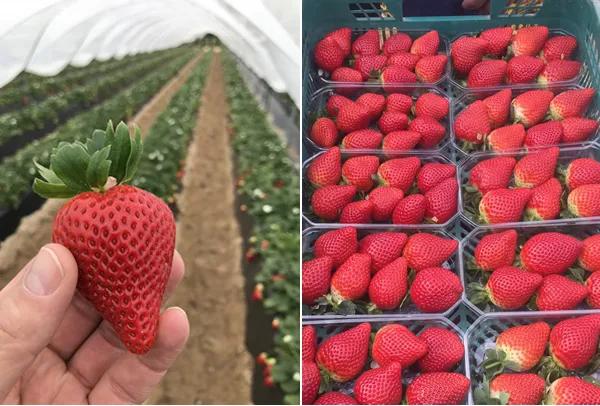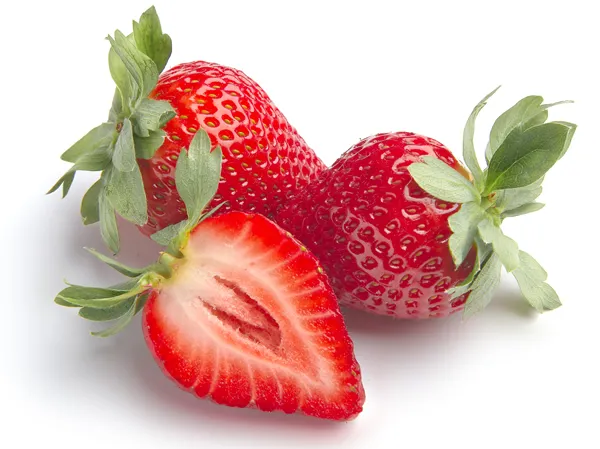The new Spanish Calinda strawberry season is about to start. "We should export some 30.000 tons of Calinda strawberries to North-West Europe next season. That's roughly 20% more than last season. It's also in line with the controlled growth we are aiming for with this variety," says Koen Merkus of the Dutch fruit breeding company, Fresh Forward.
These strawberries are currently primarily cultivated in Spain. "Our 'low chill' breeding program is located in the Huelva region. The Calinda was also introduced there. So, most of the farming is still done in Spain. However, this strawberry can be grown in several other countries too. Obviously, those around the Mediterranean Sea. The Calinda is also cultivated in Morocco, Egypt, and Jordan. We're working on testing the Calinda in places like Chile, South Africa, and Australia soon too."

The Calinda breaks away from the old stereotypical Spanish strawberry
"At the moment, a lot of Calinda is being exported to some countries, in particular. These are the UK, Ireland, the Netherlands, Germany, and Belgium. Special Fruit is a strategic partner. As such, they had an enormous input in the early years, marketing this variety," says Koen.
"Now, we market this strawberry along with about 15 traders and retailers. The Calinda's characteristics - good flavor, pleasant internal texture, and juiciness - break out of the outdated Spanish strawberries mold. It fits well with what consumers in those countries have learned to expect from their summer strawberries."
"The Calinda has few quality issues and transports well. Its excellent shelf life results in low wastage levels in the supermarket. That also allows shoppers to keep these strawberries a little longer. These are important reasons why both traders and retailers like to work with the Calinda. Of course, there are countries in which we'd like to expand further. These include Germany and France. And of course, we want to further familiarize the local Spanish market with this product too," continues Koen.
"Naturally, it's not solely the variety, but also the growers that are essential to the end product. The Calinda farmers we partner with are the best in Spain. It's vital that we keep in direct contact with them. Our cultivation technician, Antonino Vazquez, is, therefore, in Huelva all year long. He supports and advises the growers. Antonino's been familiar with this strawberry from the very beginning. And he has lifelong experience in Spanish strawberry cultivation."
"We visit growers in Morocco, Egypt, and Jordan too, and organize demo days. We also recently got a specialized location. There we can do more extensive cultivation trials with Calinda and other promising selections. That will enable us to introduce new varieties in the future. They'll have an accompanying cultivation blueprint," explains Merkus.

Controlled expansion
"The Calinda isn't a mere variety. It's also a project where the breeder, nursery, grower, and trader work closely together. The farmers produce a great product with a clear added value. These reach stores throughout Europe, thanks to our trading partners' efforts. It's, therefore, important to guarantee this added value. And to keep expansion under control. We, however, expect accelerated growth in continents outside of Europe. It'll be faster than in the initial phase in Spain. That's because we're more familiar with the strawberry and its potential already."

Not suited to high-tech greenhouses, but can be organically grown
When asked whether this variety can be used in high-tech greenhouse strawberry cultivation, the marketer answers, "We've tested the Calinda in greenhouses for several years. Unfortunately, it doesn't seem entirely suitable for that. But, the low chill strawberry concept in the greenhouse is interesting. We're now also considering its applicability in new selections. Next year, these new kinds will be farmed for the first time."
According to Koen, the variety is certainly suitable for organic cultivation. "The Calinda is resilient and usually has few problems with diseases. So far, it seems to be doing well in organic cultivation. This was confirmed last year. The Regional Government of Andalusia researched different organically-grown varieties. The Calinda came out on top".
Where will this strawberry be in five years? "It's difficult to predict what will happen in Spain. It's a competitive market where varieties arrive quickly and sometimes disappear just as quickly. There's a high demand for the Calinda. We expect this to continue for the time being. The goal, however, isn't to sell as many plants as possible. We want to achieve a solid, long-term market position. Production must be well matched to demand," Koen concludes.
 For more information:
For more information:
Fresh Forward Marketing & Breeding
38A Wielseweg
4024 BK, Eck en Wiel, NL
Tel: +31 (0) 344 693 314
Email: [email protected]
Website: www.fresh-forward.nl
